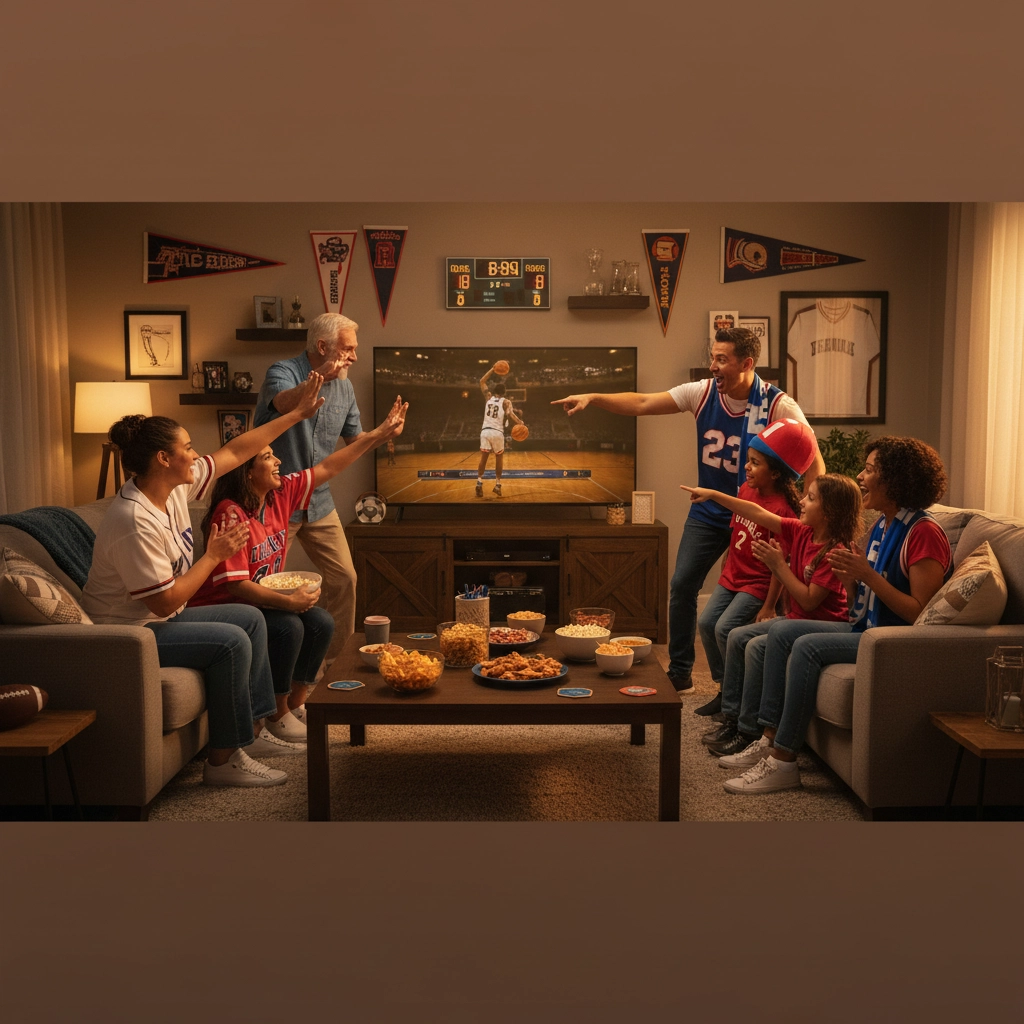Building a sports fan community doesn't require weeks of planning or complex strategies. You can establish the foundation for a thriving online community in just five minutes, then grow it from there using proven tactics that work across platforms.
The 5-Minute Launch Strategy
Minute 1: Choose Your Platform
Select where your community will live. Consider your audience's preferences – younger fans gravitate toward TikTok and Instagram, while older demographics prefer Facebook groups. Discord works well for real-time game discussions, while platforms like Fanz.us offer specialized tools for sports community building.
Minute 2: Define Your Community Purpose
Write a clear mission statement that answers: What brings these fans together? Examples include supporting a specific team, discussing college athletics, or sharing training tips. Post this prominently so new members understand the community's focus immediately.
Minute 3: Create Welcome Instructions
Draft a simple welcome message with clear first steps for new members. Include prompts like "Introduce yourself," "Share your favorite team memory," or "Tell us your prediction for this season." Clear direction eliminates confusion and encourages participation.

Minute 4: Set Up Real-Time Engagement
Establish systems for live interaction during games and events. Create pinned discussion threads, enable live chat features, or schedule polls during key moments. Real-time engagement keeps members active and creates shared experiences.
Minute 5: Invite Your First Members
Share your community across existing channels – social media accounts, email lists, or personal networks. Start with engaged fans who already interact with your content. Personal invitations work better than generic promotional posts.
Building Beyond the Initial Launch
Create Multiple Connection Points
Successful sports communities offer various ways for fans to interact. Feature member spotlights, share fan photos and videos, and involve the community in decisions about merchandise or team support activities. When fans see their contributions valued, they become more invested in the community's success.
Establish Regular Engagement Patterns
Consistency drives community growth. Schedule weekly discussion topics, host prediction contests, or create themed days like "Throwback Thursday" for classic moments. Use game schedules as natural engagement opportunities with pre-game discussions, live reactions, and post-game analysis threads.
Build Specialized Spaces Within Your Community
Create dedicated areas for different interests within your main community. Separate channels or threads for trade discussions, player analysis, local meetups, or fantasy leagues help members find their specific interests while maintaining connection to the larger group.

Organize Events That Strengthen Bonds
Transform online connections into real-world relationships through watch parties, local meetups, or community service projects. Partner with local businesses to offer member discounts or organize charity drives that align with your team's values. These activities create deeper community bonds beyond digital interactions.
Leverage User-Generated Content
Let fans tell your story through their own content. Encourage game-day photos, reaction videos, and social media posts using community hashtags. User-generated content feels authentic and creates a two-way conversation rather than one-directional communication from administrators.
Show Genuine Appreciation
Strong communities thrive on mutual investment. Recognize active members, give fans input on community decisions, and celebrate member achievements both sports-related and personal. Appreciation can be as simple as highlighting member contributions or as elaborate as exclusive access to team events.
Platform-Specific Community Building
Instagram Communities
Use Stories polls and question stickers to gather fan opinions. Create highlight reels for different topics like game predictions, fan art, or community milestones. Instagram's visual nature works well for sharing fan photos and behind-the-scenes content.
TikTok Fan Groups
Build communities around trending sounds and challenges related to your team or sport. Encourage fans to create content using team-specific hashtags and duet with popular fan videos to increase visibility.
X (Twitter) Engagement
Utilize X Spaces for live audio discussions during games. Create Twitter Lists featuring community members to amplify their voices. The platform's real-time nature makes it ideal for instant reactions and breaking news discussions.

Fanz.us Integration
Sports-focused platforms like Fanz.us offer specialized features for fan community building. These platforms understand sports fan behavior and provide tools specifically designed for team discussions, player analysis, and fan engagement.
Measuring Community Success
Track engagement metrics beyond follower counts. Monitor active participation rates, member-generated content, and retention over time. Successful communities show consistent daily activity, high member return rates, and organic growth through member referrals.
Pay attention to the quality of discussions. Healthy communities feature respectful debates, helpful information sharing, and supportive interactions during both victories and defeats. These qualitative measures indicate genuine community bonds.
Common Mistakes to Avoid
Avoid over-moderation that stifles natural conversation flow. While rules are necessary, excessive restrictions can kill community spirit. Allow organic discussions to develop while intervening only when necessary.
Don't ignore negative feedback or criticism. Address concerns transparently and use feedback to improve community experience. Fans appreciate honesty about challenges and respect communities that adapt based on member input.
Resist the urge to constantly promote products or services. Communities thrive on genuine fan interaction, not sales pitches. Commercial content should comprise a small percentage of overall community activity.
Scaling Your Community
As your community grows, identify and empower active members as moderators or community leaders. These advocates help maintain community culture while reducing administrative burden on founders.
Establish clear guidelines for acceptable behavior and consequences for violations. Consistent enforcement builds trust and maintains the welcoming environment that attracted initial members.
Consider creating tiered membership levels or exclusive access for long-term members. Recognition systems encourage continued participation and create aspirational goals for newer members.
The foundation for a thriving sports fan community can be established in just five minutes through strategic platform selection, clear purpose definition, and immediate member engagement. Success comes from consistent nurturing, genuine appreciation for member contributions, and creating multiple opportunities for fans to connect over their shared passion for sports.
